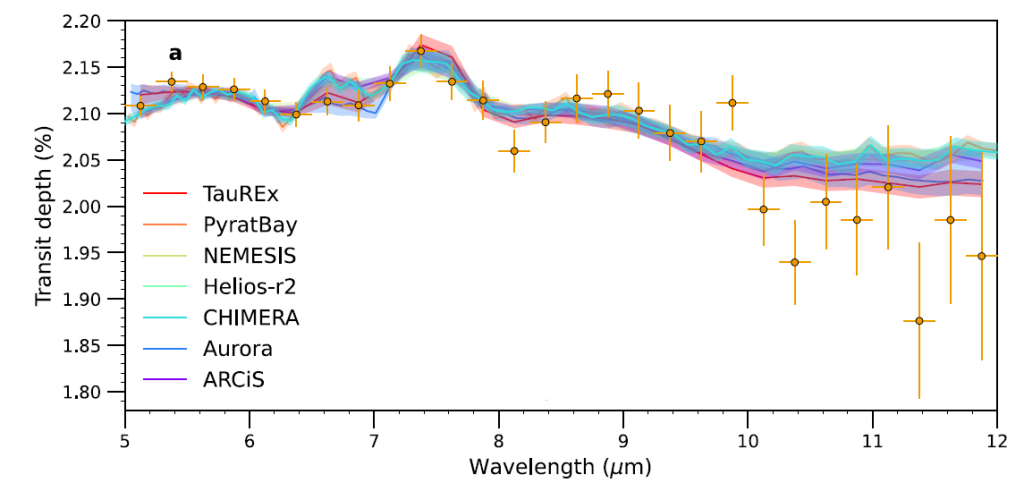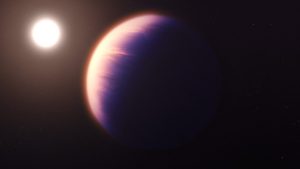The James Webb Space Telescope has produced a new portrait of the atmosphere of exoplanet WASP-39b, a “hot Saturn” some 700 light-years away. After the first near-infrared observations in 2022, which revealed for the first time the presence of sulfur dioxide (SO2) in the atmosphere of an exoplanet, it was observed again in 2023, but this time in the far infrared, using the MIRI spectrometer. This new observation enabled the international research team, including Saclay’s Astrophysics Department, to confirm the presence of this molecule in the atmosphere of WASP-39b and to constrain its abundance. This recent study demonstrates that photochemistry shapes the atmosphere of WASP-39b over a wide range of wavelengths.
The study was published in the prestigious journal Nature.
WASP-39b, a “Hot Saturn” some 700 light-years away
WASP-39b is a hot gas giant with a mass approximately equivalent to that of Saturn (about a quarter of that of Jupiter) and a diameter about one-third larger than Jupiter’s. This extreme bloating classifies it as a Hot Saturn. This characteristic is partly linked to its high temperature (around 900 degrees Celsius), resulting from its close proximity to its star, WASP-39, which is only about an eighth of the Sun-Mercury distance. It completes an orbit around its star in just over four Earth days. The planet was discovered in 2011 based on ground-based detections of the subtle periodic decrease in the light from its host star when the planet “transits,” meaning it passes in front of the star.
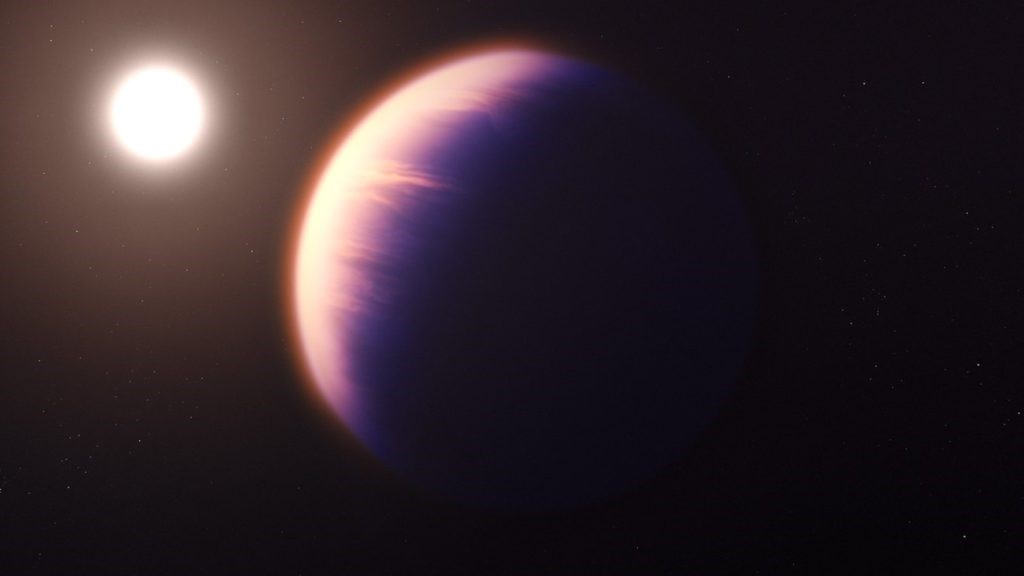
An atmosphere scrutinized in detail for a long time
In addition to simple exoplanet detection, transit observations can provide researchers with ideal opportunities to probe planetary atmospheres. Powerful telescopes are required to capture the subtle light transmitted through the planet’s atmosphere, allowing researchers to identify the different gases composing it.
With its bloated atmosphere and frequent transits, WASP-39b is a perfect target for transmission spectroscopy. Previous observations conducted with both ground-based and space telescopes, such as the Hubble and Spitzer telescopes, combined their capabilities to obtain the most comprehensive spectrum of the atmosphere possible with the technology of that time. Water vapor (H2O), carbon monoxide (CO), sodium (Na), and potassium (K) were thus revealed (see Figure 2).
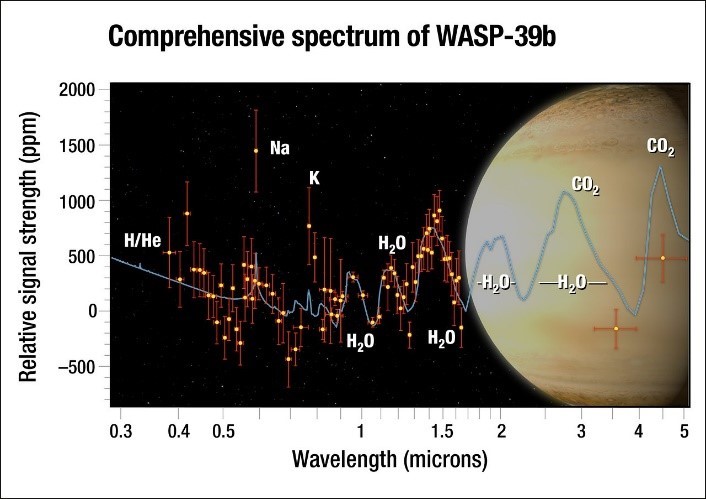
With the arrival of the JWST, the study of WASP-39b enters a new era
WASP-39b was among the first targets of the JWST. In July 2022, the powerful NIRSpec spectrometer observed the planet in the near-infrared range (from 1 to 5 μm), allowing for the unequivocal detection of carbon dioxide (CO2) in the atmosphere of the gas giant for the first time (more information here). Later, the JWST deployed its other near-infrared instruments, adding sulfur dioxide (SO2) to the list of detected gases. This sulfur compound is believed to be produced in the atmosphere through photochemistry, a phenomenon that had not been observed in an exoplanet before. Since its detection in the atmospheres of other exoplanets (see here), the presence of SO2 suggests that photochemistry is a key process in high-temperature atmospheres.
However, this latest detection was based on a single molecular line of SO2 (at 4.05 μm) with low amplitude in the transmission spectrum of WASP-39b. It was therefore crucial to expand the spectral observation range to analyze other absorption bands of SO2 and better constrain the abundance of SO2.
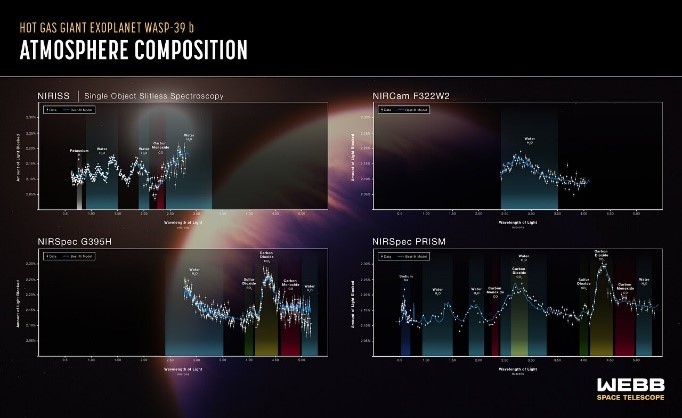
MIRI confirms the presence of SO2 and provides a more precise measure of its abundance
On February 14, 2023, WASP-39b was once again observed by the JWST, but this time in the mid-infrared range, using the Low-Resolution Spectrometer (LRS) of MIRI, spanning from 5 to 12 μm. These new data allow the analysis of two additional characteristic molecular lines of the SO2 molecule at 7.7 and 8.5 μm (Figure 4). By fitting various models of planetary atmospheres with different compositions, it is possible to identify the present absorbers and constrain their abundance.
This new observation enabled researchers to confirm the presence of sulfur dioxide in the atmosphere of WASP-39b and constrain its abundance to 0.5 to 25 ppm (1σ range), consistent with previous results. This study demonstrates that photochemistry shapes the atmosphere of WASP-39b across a broad range of wavelengths.
Contacts DAp: Pierre-Olivier LAGAGE, Achrène DYREK
